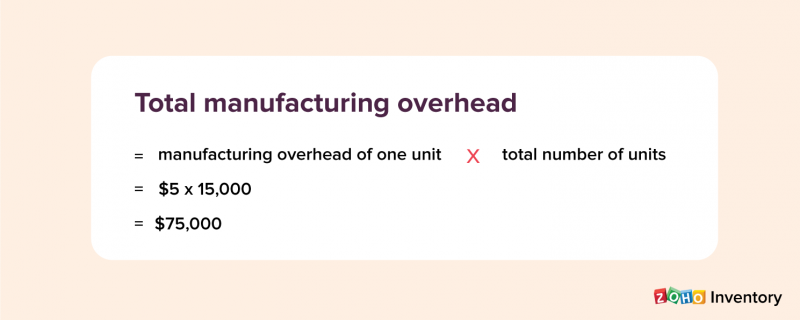Overhead Absorption Rate Formula
Work out predetermined overhead rate for each of the above two departments. Formula Calculation Problems and Solutions.

Absorption Costing Formula Calculation Of Absorption Costing
Direct Labour Cost or Direct Wages Method 3.

. A company must pay overhead costs regardless of production volume. The machine hour rate is similar to the labour hour rate method and is used where the work is performed primarily on machines. Machine Hour Rate Method 6.
The overhead rate of cutting department is based on machine hours and that of finishing department on direct labor cost. Direct Labour Hour Method 5. Heres the formula for overhead rate.
Overhead Absorption Rate per Unit Factory Overhead Units of Production 7 Sales Price Method. That overhead absorption rate is the manufacturing overhead costs per unit called the cost driver which is labor costs labor hours and machine hours. This costing method treats all production costs as costs of the product regardless of fixed cost or variance cost.
The formula used in computing the rate is. Labor Hour Rate Overheads Labor Hours. Forward Rate applicable for the period t-11 Relevance and Use of Forward Rate Formula.
The formula of absorbed overhead is as follows. Overhead Rate Overhead Costs Income From Sales. Absorption costing is linking all production costs to the cost unit to calculate a full cost per unit of inventories.
Factory overheadMachine hours If factory overhead is Rs 3 00000 and. Finally the formula for an annualized rate of return can be derived by dividing the sum of initial investment value step 1 and the periodic gains or losses step 2 by its initial value which is then raised to the reciprocal of the holding period step 3 and then minus one as shown below. Its used to define the amount to be debited for indirect labor material and other indirect expenses for production to the work in progress.
The two types of overhead costs are fixed and variable. Overhead costs are ongoing costs involved in operating a business. When you plug those numbers into the equation it looks like this.
Rate per Unit of Production Method 7. A final products cost is based on a pre-determined overhead absorption rate. The overhead absorption rate is calculated to include the overhead in the cost of production of goods and services.
If the total units produced are 3000 and the total production overhead on these units is 15000 then. The following are the various methods and techniques of absorbing manufacturing overhead. Prime Cost Percentage Method 4.
Fixed Absorbed Overhead Rate Fixed Overheads Output Machine Hours. Estimated manufacturing overhead costEstimated machine hours 75 per machine hour. Overhead Rate 1800.
For small widgets the allocation equals 3 ie one hour of labor at 3 per hour. Forward Rate ft-1 11stt 1st-1t-1 -1. Normally the forward rates are used by the investors who believe that they have a good understanding of market trends from immediate past to current market scenario relative to.
The overhead absorption rate is calculated as follows. Definition Formula Calculation and. Direct Material Cost Method 2.
Finally allocate the overhead by multiplying the overhead rate by the number of labor hours required. We can have two broad types Fixed and variable absorbed overhead rate. Lets say you brought in 28000 last month and spent 1800 in overhead costs.
Where stt-period Spot Rate st-1t-1-period Spot Rate ft-1 1. It is sometimes called the full costing method because it includes all costs to get. Rate per unit Amount of production overhead Number of units produced.
The reason why manufacturing overhead is referred by indirect costs is that its hard to trace them to the product. Overhead absorption rate per unit Total estimated overheads Total estimated units of output.

Acc2232 Overhead Absorption Rate Fadhil Consultancy And Training

Absorption Of Overheads 100 Commerceiets

Manufacturing Overhead Moh Cost How To Calculate Moh Cost

Fixed Overhead Absorption Acca Global

Predetermined Overhead Rate Top 5 Components Examples

0 Response to "Overhead Absorption Rate Formula"
Post a Comment